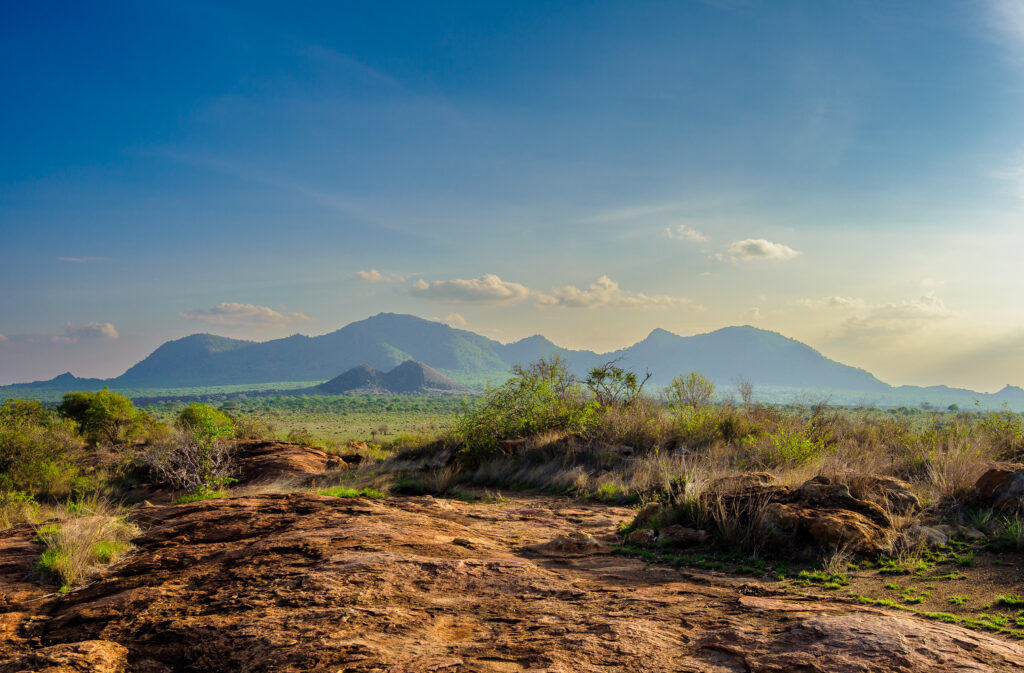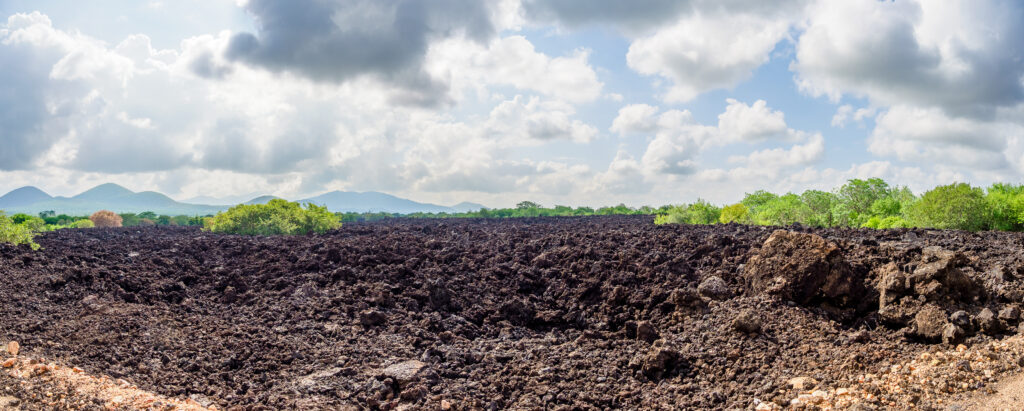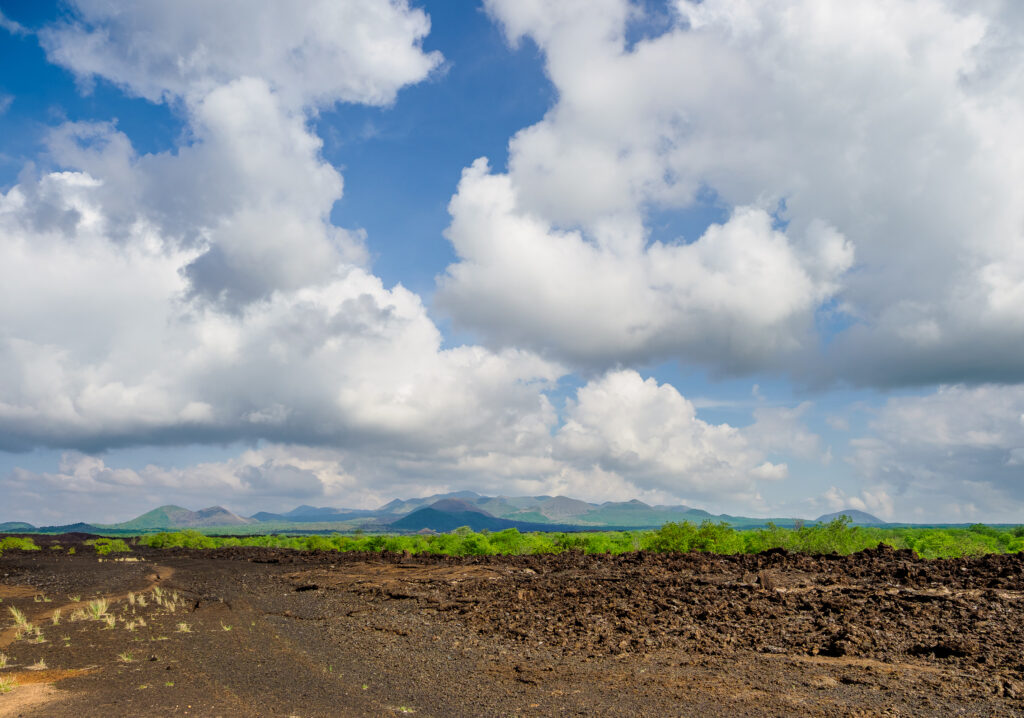Chyulu Hills: The Green Hills of Africa
Nestled between Amboseli National Park and Tsavo West, Chyulu Hills is one of Kenya’s most breathtaking yet lesser-known destinations. Often referred to as the “Green Hills of Africa,” this volcanic mountain range offers spectacular landscapes, rolling green hills, lava flows, caves, and diverse wildlife.
Whether you’re looking for a peaceful retreat, a thrilling wildlife safari, or an off-the-beaten-path adventure, Chyulu Hills National Park is a must-visit destination.
🔹 Best for: Nature lovers, adventure seekers & photographers
🔹 Activities: Wildlife safaris, hiking, horseback riding, birdwatching, and cultural visits
🔹 Best Time to Visit: June – October & December – March



Why Visit Chyulu Hills?
Spectacular Volcanic Landscapes
Chyulu Hills is a young volcanic mountain range with breathtaking rolling hills, ancient lava flows, caves, and craters. The Shetani Lava Flow, a massive black lava field, is one of the park’s most striking features.
Stunning Views of Mount Kilimanjaro
Few places in Kenya offer such unobstructed views of Mount Kilimanjaro as Chyulu Hills. The backdrop of Africa’s highest peak makes for unforgettable sunrise and sunset moments.
Rich Wildlife & Birdlife
While not as famous as Masai Mara, Chyulu Hills is home to diverse wildlife, including:
✅ Elephants, leopards, buffaloes, giraffes, zebras & antelopes
✅ Rare species like aardvarks, bush babies, and wild dogs
✅ Over 300 bird species, making it a paradise for birdwatchers
Off-the-Beaten-Path Safari Experience
Unlike the crowded game parks, Chyulu Hills offers a peaceful safari experience. Here, you can enjoy game drives and walking safaris in complete tranquility.
Adventure Activities Beyond Safaris
Apart from traditional safaris, Chyulu Hills offers thrilling outdoor activities:
✔ Hiking & Trekking – Explore trails with panoramic views
✔ Horseback Safaris – Ride through the wilderness like early explorers
✔ Cave Exploration – Discover the famous Leviathan Cave, one of the longest lava tubes in the world
✔ Cultural Visits – Meet the Maasai people and learn about their traditions
Wildlife Safari in Chyulu Hills – What to Expect
Chyulu Hills offers an exclusive and intimate safari experience, ideal for those who want to explore Kenya beyond the usual tourist spots.
Game Drives & Walking Safaris
Unlike traditional safaris, Chyulu Hills allows walking safaris, where you can experience the African wilderness up close. Expert guides will take you through stunning landscapes as you track animals and learn about the local ecosystem.
Wildlife Encounters in Chyulu Hills
Expect to see:
✔ Elephants – Large herds migrate between Tsavo & Amboseli
✔ Big Cats – Leopards & cheetahs roam the region
✔ Buffaloes, zebras & giraffes – Commonly spotted across the plains
✔ Rare species – Wild dogs, bush pigs & honey badgers
✔ Birdwatching Paradise – Home to colorful species like the African crowned eagle and the Hartlaub’s turaco
Want a truly immersive safari? Stay at a private lodge or luxury camp for an exclusive experience!
Best Places to Stay in Chyulu Hills
Chyulu Hills offers luxurious lodges, eco-friendly camps, and exclusive safari stays. Here are some top-rated accommodations:
Ol Donyo Lodge
✔ Luxury safari lodge with private plunge pools & stunning Kilimanjaro views
✔ Horseback riding, bush walks, & night game drives
Campi ya Kanzi
✔ Eco-friendly safari lodge nestled in the heart of the Maasai community
✔ Ideal for authentic cultural experiences & walking safaris
Finch Hattons Luxury Camp
✔ Located near Tsavo West, offering unparalleled comfort & wildlife experiences
✔ Perfect for honeymooners & luxury travelers
🔹 Looking for budget options? There are public campsites available for adventurous travelers.
Best Time to Visit Chyulu Hills
While Chyulu Hills is a year-round destination, the best time for safaris and outdoor activities is:
✔ June – October (Dry Season) – Ideal for wildlife viewing & hiking
✔ December – March – Great for photography, birdwatching & cultural visits
✔ April – May (Rainy Season) – Lush landscapes, but roads can be muddy
For the best safari experience, plan your visit during the dry months when wildlife is easier to spot!
How to Get to Chyulu Hills
By Road:
Chyulu Hills is about 4-5 hours from Nairobi by car. You can drive via Emali or Mtito Andei on the Nairobi-Mombasa highway.
By Air:
You can take a chartered flight from Nairobi’s Wilson Airport to the Ol Donyo airstrip or Tsavo airstrip.
👉 Need help planning transport? We offer private transfers & flight bookings!
📞 Book Your Kenya Safari & Beach Holiday Today!
Ready to explore one of Kenya’s best-kept secrets? Let us plan your perfect Chyulu Hills safari experience!
📩 Get a Free Quote | 📞 WhatsApp Us
📍 Follow us on: Facebook | Instagram | TripAdvisor
FAQs
1. What makes the Chyulu Hills unique?
The Chyulu Hills’ volcanic origins, lush landscapes, and rich biodiversity make them a one-of-a-kind destination in Kenya.
2. What activities can I do at the Chyulu Hills?
You can enjoy hiking, horseback safaris, wildlife game drives, birdwatching, and cultural experiences with the Maasai community.
3. When is the best time to visit the Chyulu Hills?
The dry season (June to October) is ideal for hiking and wildlife viewing, while the green season (November to May) offers lush scenery and excellent birdwatching.
4. What wildlife can I see in the Chyulu Hills?
Visitors can spot elephants, giraffes, lions, leopards, and over 200 bird species, including turacos and robins.
5. Are there accommodation options near the Chyulu Hills?
Yes, from luxury lodges like Ol Donyo Lodge to eco-friendly camps, there are accommodations to suit every preference.
6. How do the Chyulu Hills contribute to conservation?
The hills serve as a water catchment area, support wildlife migrations, and are preserved through national park protections and community-led conservation.

